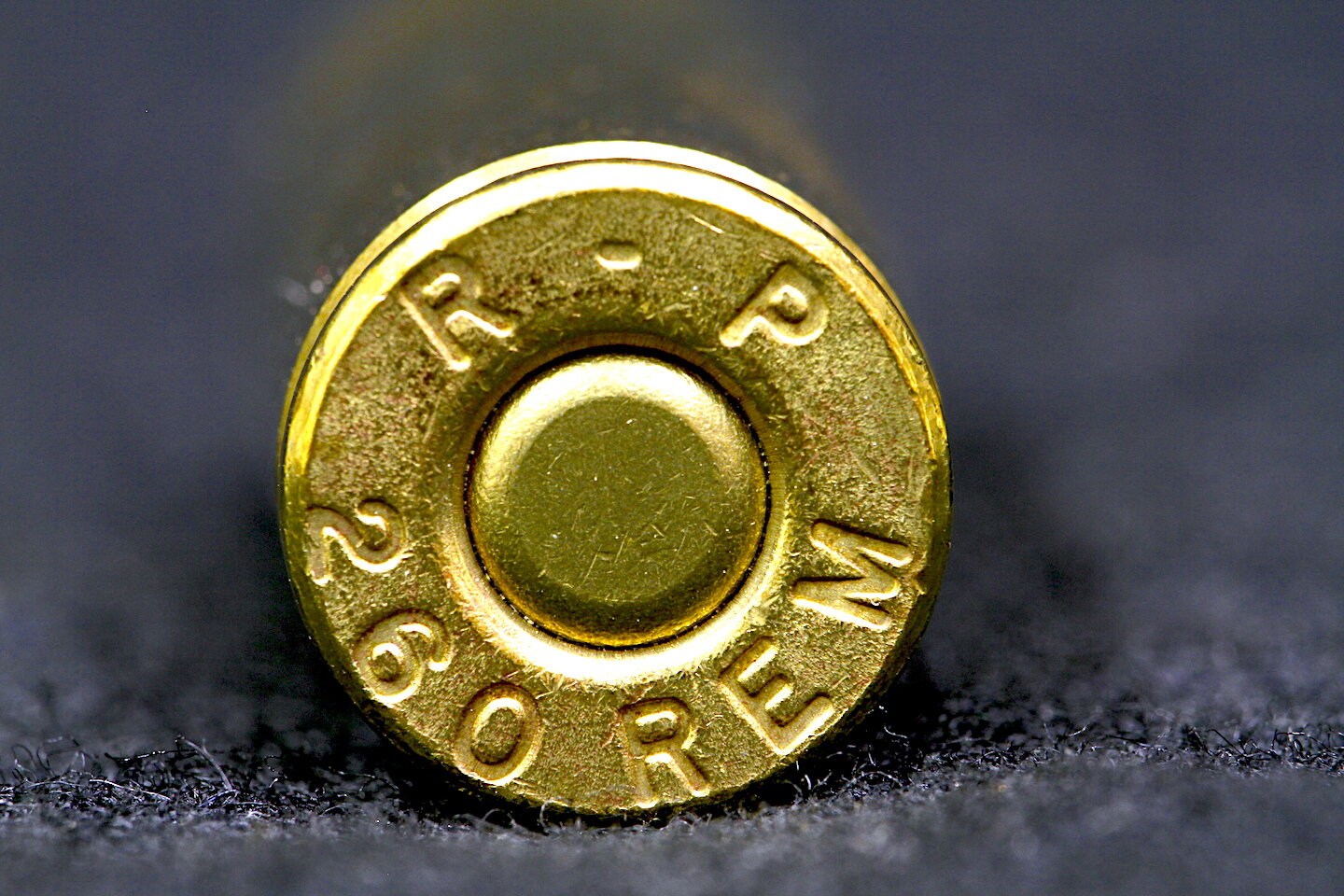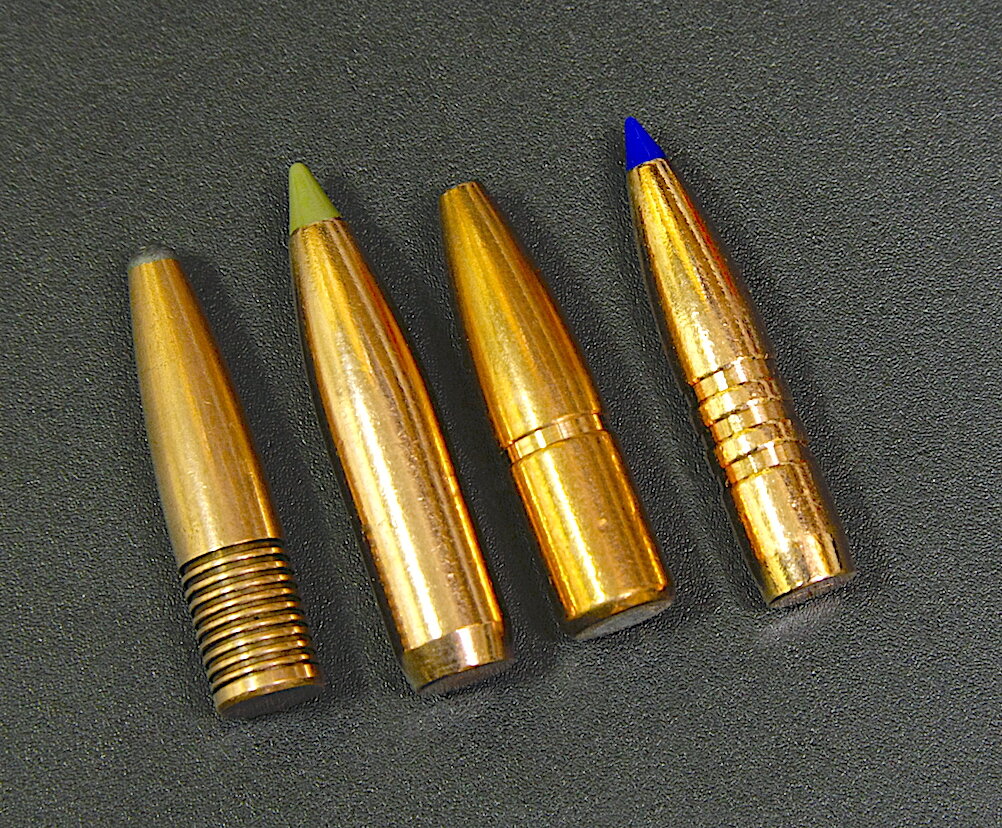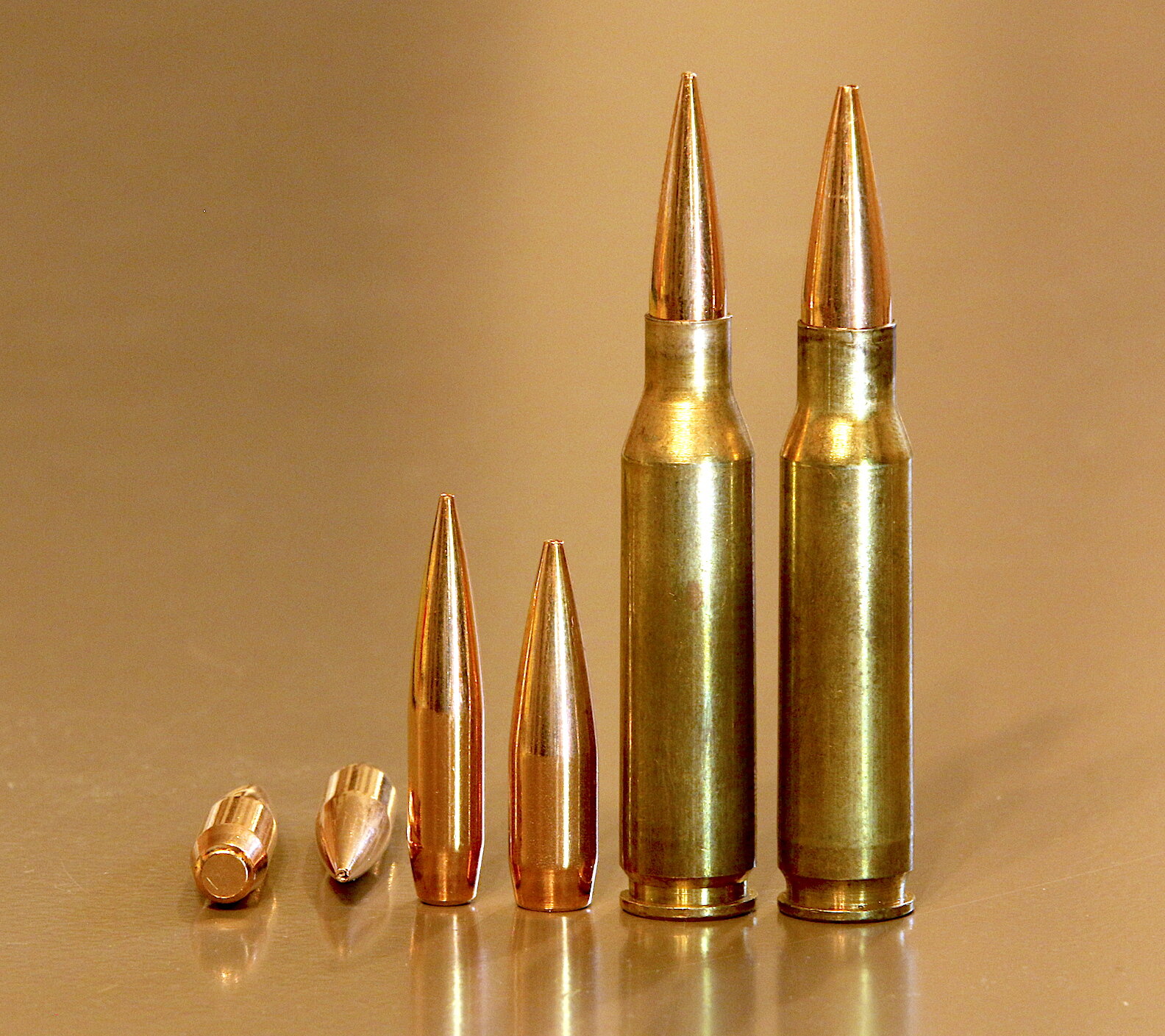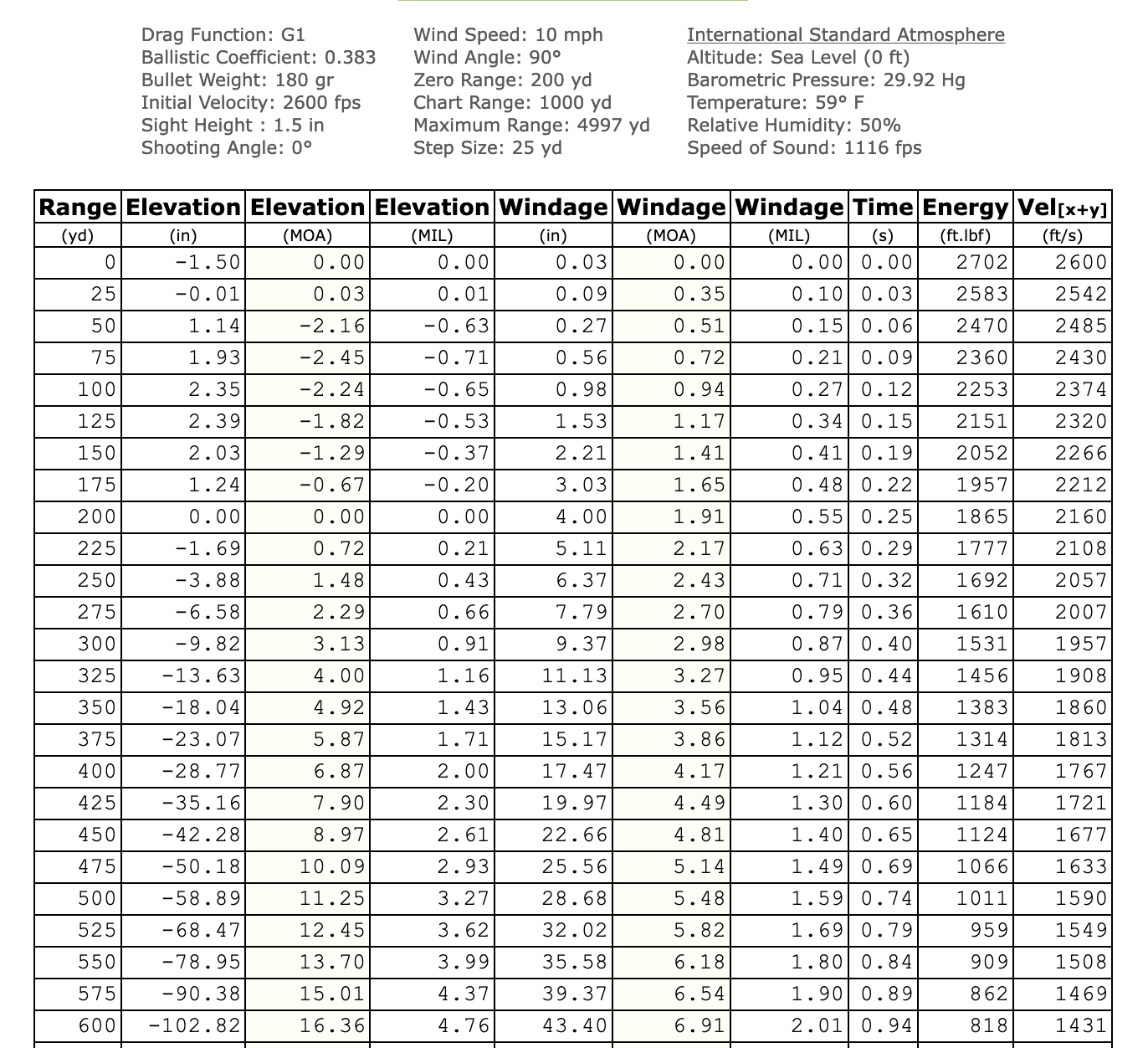260 Remington Beats 308 Winchester? Maybe
Can a 260 Remington really outperform a 308 Winchester? A viewer of one of our You Tube videos on the 308 Winchester compared to the 7mm-08 Remington and 260 Remington raised some good points about the fairness of such comparisons.
This is the ammo tested and compared in the video linked in blue above.
Here is the gentleman's letter:
Your choice of bullets renders your statistics meaningless. You must compare bullets with equal ballistic coefficients. You essentially said the same yourself. That said, for deer I’d likely pick one of the smaller diameter cartridges as well. But keep your comparisons fair. A thirty cal 150-grain bullet simply doesn’t have a BC that can compete with a 140 grain 6.5 bullet in terms of trajectory. Many would suggest the larger diameter hits big game harder regardless.
Harold
Yes, B.C. Matters
Harold has some good points, the main one being that of two 150-grain bullets of similar form, (meaning both are boat tail spire points rather than one a round nose, for instance,) the narrower one (smaller caliber) will have a higher B.C. (ballistic coefficient.) That means if both are sent flying downrange at the same muzzle velocity (M.V.), the skinnier one will drop less, deflect less in the wind, and retain more energy because it flies more efficiently. It suffers less atmospheric drag so does not waste its kinetic energy pushing air out of its way.
Three bullets of the same mass but different shapes illustrate how the more aerodynamically shaped one will conserve more energy, fly flatter and drift less in crosswinds.
Bullets of equal weight and muzzle velocity in any caliber fly differently due to aerodynamic shape. Forms that minimize drag maximize range and energy. The sleek, boat-tailed spire point on left looks like the most efficient of this trio.
Why Hunters Choose 308 Win. Over 260 Remington
But Harold is barking up the wrong tree when he claims one must compare bullets with equal B.C. That’s certainly one way to assess performance. But most hunters do not choose their caliber (chambering) based on bullet B.C. Heck, until recently factory ammo rarely included B.C. numbers. Many still don’t. We make our choices based on advertised velocity, bullet weights, cartridge reputations, and vague ideas about specific cartridge performance. (Such as “The 308 is a military sniper round!” and “It hits harder!” Why? “Because the bullet’s bigger!”) These are some of the reasons why the 260 Remington is relatively unknown while the 308 Winchester is one of the most popular rounds in the world. But which is the real ballistic champ?
A Cartridge by Any Other Name...
Photo shows the base or headstamp of a 260 Remington cartridge.
What's in a name? A 260 Remington by any other name would still shoot as flat. Flatter than the 308 Winchester. (Apologies to Shakespeare if he's reading this.) By the way, the R-P stands for Remington Peters, not RIP (Rest in Peace.)
I remember when, as teenagers, my brother and I would peruse the Speer handloading manual and lust after various cartridges based on maximum attainable muzzle velocity plus silly things like their titles. The 225 Winchester, for instance, sounded pretty boring when compared to the 219 Donaldson Wasp. And, like the “many” hunters Harold alluded to in his last sentence, we also believed larger diameter bullets hit harder. But they don’t. Not always. Which is why I make videos and write articles that investigate the physics behind bullets in flight. I’m learning as I go, and often I learn that I don’t know as much as I think I know. And readers often know more than I think I know! And that’s fine because it helps me and all other readers get things right. So if you find mistakes in this article, let me know about them! Until you do, I'm sticking with my research which shows the 260 Remington shoot flatter, drifts less, and in some cases even hits harder.
Make 260 Remington vs. 308 Test Fair
The bullets I compared in this video were not identical, but as close as I could come. All were Remington Core-Lokt, an extremely popular bullet in the deer woods. I compared a 150-grain in the 308 Winchester against the 140-grain Core-Lokts in the 7mm-08 and 260 for two reasons. First, all were/are popular deer hunting loads, the kind of basic factory loads most hunters pick up at their local retail store. Second, they were as similar to one another as I could find because Remington doesn’t offer a 140-grain Core-Lokt 308 Winchester load nor a 150-grain 260 Remington load. This actually gave a slight advantage to the 308 because, with the same powder volume, it can more efficiently propel the wider bullet to a higher muzzle velocity (more surface area at base.) In addition, the 10 grains additional bullet weight improved the 308’s B.C. But not quite to the level of the .284 and .264 bullets. And that makes all the difference at extended ranges.
Different bullet types, calibers, and weights congtribute to B.C. ratings.
Controlled expansion, premium bullets designed to retain maximum weight and penetrate deeply are from left, North Fork, Nosler E-Tip, Swift A-Frame and Barnes Tipped Triple Shock.
The narrower bullets made with the same materials (density) drag less in the air. This improves trajectory and conserves energy.
The results of the trajectory comparisons revealed that both of the smaller calibers not only dropped less and deflected less in the wind, but retained more energy far downrange. (Farther than I consider reasonable for shooting at game, but others may not.) Most surprising to me, as well as most viewers, was that the little 260 Rem. bullet actually hit harder at 600 yards than did either of its big brothers. Once again, the reduced drag on the higher B.C. projectile makes the difference.
Bigger Isn't Always Better
Results like this tend to raise the ire of 308 Winchester lovers. Well, sorry about that. But physics is physics. I have no dog in this fight. I’m merely trying to shine some light on what is a rather dark subject for some hunters. I suspect that most of us instinctively believe any larger caliber with roughly the same case size (powder capacity) as smaller calibers will be the superior performer all around. But that isn’t always the case (accidental pun.) Some older cartridges like the 45-70 Govt. are loaded to lower pressures than more modern rounds like the 450 Marlin. The result is that, even though the 45-70 shoots the same bullets and has similar case capacity, the 450 Marlin shoots about 300 fps faster in most factory ammunition.
Photo shows 260 Remington, 243 Win, 308 Win, and 30-06 to compare sizes.
From L: 260 Remington, 243 Win., 308 Win., 30-06. The unfortunate truth is that each of these other cartridges can shoot flatter than the 308 Win. All but the 243 can retain more energy far downrange. But the 308 is still a darned versatile and effective hunting round.
That's not the case with the 308, 7mm-08 and 260 Rem. They are all fully modern, short-action cartridges build on the same basic case, so powder volume is nearly identical and chamber pressures are similar. Thus it is fair to ask, as Harold suggests, what happens if one does compare these with bullets of identical B.C. ratings. The answer is easy. If B.C. and M.V. are identical, trajectories will be identical. But the heavier bullet will always carry more energy. The heaviest bullet is the winner in all categories except recoil. (Assuming you don't like heavy recoil.) However -- and this is a big however -- to get a .308" bullet the same B.C. of a similarly shaped .264" bullet you have to increase its length/weight significantly. Roughly to 195-grains. And that means you'll sacrifice M.V. The 308 case just doesn't have the powder volume to push a 195-grain bullet as fast as a 140-grain.
Mass vs. Muzzle Velocity
This is the spoiler. In a given case/powder volume with similar peak pressures you'll always get more M.V. from the lighter slugs. And in order to get larger diameter slugs to equal the B.C. of the sleekest smaller caliber slugs, you must increase mass. There’s the trade off. What’s the effect on performance? In general, the heavier, higher B.C. bullet at its lower M.V. will drop more. It will always carry more energy, but at some extreme distance downrange it will be overtaken by the lighter bullet launched at a significantly higher M.V. Study the trajectory charts below and you'll see this.
260 Remington & 308 With Similar B.C.s
260 Remington and 308 Winchester beside some sleek, sharply pointed, high B.C. bullets
These aren't the exact same bullets as compared in our ballistic tables, but they illustrate how the narrower .264 bullet can reach a higher B.C. than a similarly shaped .308 bullet of similar mass. Note how the 260 Remington on left has the same case capacity as the 308 on right. With only so much powder space, the lighter bullet is going to be driven faster and that always improves ballistic performance.
To illustrate this, let’s compare the 260 Remington and 308 Winchester using bullets with B.C. as near one another as possible. I found a 142-grain Nosler AccuBond Long Range .264 rated B.C. .625 and a 195-grain Sierra Tipped MatchKing .308 rated B.C. .610. Not identical, but darn close. We’ll push both at what most handloading manuals list as top speeds. We’ll zero both at 200 yards. Study the resulting ballistic tables and you’ll see how lower M.V. prevents the heavier, higher B.C. bullet from matching the performance of the lighter 260 Rem. bullet with nearly equal B.C.
260 Remington, 142-grain Nosler ABLR, 2,800 fps
308 Winchester, 195-grain Sierra TMK, 2,600 fps
I'll throw in a trajectory table (below) for a more common 180-grain bullet at M.V. claimed by Remington. Note the significant loss of B.C., due both to the less aerodynamically efficient shape of the Core-Lokt and the 15-grain weight reduction. Note also that retained energy falls below that of the 142-grain .264 bullet at just 200 yards!
308 Winchester, 180-grain Remington Core-Lokt, 2,600 fps
One of the takeaways from this ballistic data is that, yes, B.C. matters and matters greatly, but so does M.V. If in a given case volume you want your flattest trajectory and least wind deflection, stepping down in caliber while maintaining bullet mass is the way to go. But if you value striking energy more than flat trajectory and minimal wind deflection, a heavier bullet with maximum B.C. is your best option IF you can get it in a form that contributes to a high B.C. Notice the 400-yard energy of the 308 Win. 180-grain Core-Lokt compared to the 400-yard energy of the 260 Remington. You bet your sweet cupcakes B.C. matters.
(A topic I want to address in a future post is how, as Harold suggested in his last sentence and many hunters choose to believe, a wider bullet like this 180-grain .308 Core-Lokt, can deliver more energy and/or kill more effectively than the little 142-grain .264 when the latter is delivering 340 f-p MORE energy at 400 yards. How can a larger diameter bullet "hit harder" if physics shows it delivers significantly less energy? Can an additional 0.044" bullet diameter make much difference?)
But Is 260 Remington Better at Sensible Hunting Ranges?
At responsible game shooting distances all three of these short-action cartridges deliver more than sufficient energy to terminate deer, elk, and even larger beasts. Seriously, the lighter bullets aren't going to bounce off or stop in the first lung on a broadside shot. Bullet materials and construction (controlled expansion) will play a much bigger roll in termination effects than will initial bullet diameter. As for the differences in trajectory and wind deflection -- they aren’t that big of a deal either. Certainly the highest B.C. bullet from a 260 Rem. will make it much easier to hit your targets beyond 250 yards than the lowest B.C. bullet from a 308 Win. But fire a higher B.C. slug (better form factor) in .308 and even the resulting lower M.V. won’t prevent it from approaching .264 bullet trajectory. An inch or two at 300 yards? Not a big deal on targets as big as deer chests.
PHoto shows a big bull elk in hard antler.
So the big question is this: if a 142-grain .264 bullet can deliver more energy to this elk than a 308 Win. could, would it anchor the animal more emphatically?
I doubt it.
That leaves recoil as your final consideration. The 142-grain 260 Rem. load in a 7-pound rifle should recoil about 17.5 f-p at a recoil velocity of 13 f-p. The 195-grain 308 Win. load in a 7-pound rifle should recoil about 24 f-p at 15 fps. Is that enough difference to make you flinch? Will you be able to deliver your bullets more precisely with the 260 Remington? Precisely enough to offset any on-target energy advantage in the 308 Winchester?
End The Confusion!
If all of this makes your head spin, relax. I have good news. Your deer and elk probably won’t notice or care which you’re shooting. But it’s always safer to deliver the heavier bullets to the heavier game. Yes, someone somewhere once killed a polar bear with a 22 rimfire. And a controlled expansion 60-grain .224 bullet in the right place can dispatch the biggest moose. But your odds for success are better with a 195-grain .308. Just because I once made a one-shot kill on a big, old bull moose with a 120-grain .264 bullet doesn't mean it's the ultimate moose medicine. If I wanted to minimize recoil, flatten trajectory, and reduce wind deflection, especially at 300 to 400 yards, I'd chose the 260 Rem. or 7mm-08 Rem. If I were taking most of my shots inside 300 yards, I've be perfectly happy with the 308 Winchester. But I'm not going to pretend it is a superior long range "sniper" round.
Hunt honest and shoot straight.
Image shows hunter with bull moose felled by a single shot from a .264 120-grain bullet, though not fired form a 260 Remington
Rare photo of hairless-lipped 52-year-old Spomer with 12-year-old moose dropped with one poke from a 120-grain .264 bullet. Rifle is borrowed custom M70 Winchester sporting Leupold scope, probably a 4.5-14x40mm VX-III.
Guide for this hunt was the excellent Dawson Deveny at Bryan Martin's B.C. wilderness camp. I enjoyed some exciting, wild hunts there over the years. Yes, that is a boat within 20 yards of the fallen. Proximity to the stream was no small incentive for shooting this bull. Biologists tooth-aged him at 12.5 years!
The author has hunted and shot enough game with enough different rifles, cartridges, and bullets to have discovered bullet placement, construction and subsequent terminal performance are much, much more important than caliber, weight, or muzzle velocity.























